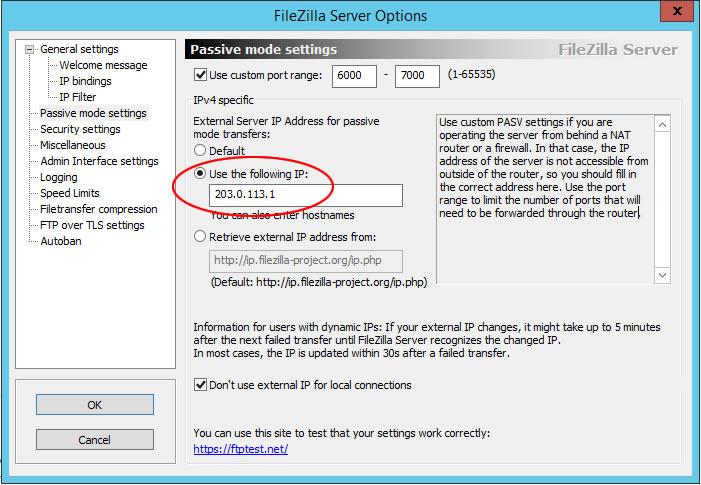Can you load balance FTP servers?
Yes, the Total Uptime cloud load balancer can distribute traffic to traditional FTP servers.
To properly configure FTP for the highest possible throughput, there are only a few steps you need to follow.
- Configure your server to allow all TCP traffic from our load balancer IP addresses. You can find a list of IP addresses on the dashboard of the management console. This is important because PASV FTP will communicate using an ephemeral port range (between 1024 and 65535) requested by the FTP Server during the initial control connection. Allowing the client to communicate with your FTP server in the higher port range is essential for higher throughput.
- Configure the load balancer to allow the TCP protocol with all ports (wildcard) by entering an asterisk “*” in the port number field.
- Publish your load balancer on a cloud IP and perform tests.
Firewall issues? Many FTP servers allow you to configure an external IP for passive mode transfers, which may critical to avoiding firewall issues due to an IP mismatch (e.g. the FTP server asks the client to connect back on x.x.x.x using port zzzz but the actual request comes from the load balancer using an IP of y.y.y.y). In almost all cases, you’ll want to configure this option to give out the public IP of the Cloud Load Balancer instead of the FTP server’s public IP. In FileZilla, for example, you can find that setting here: (the IP shown below is an example)

Yes, it is possible to load balance SFTP too. This is simply data transfer over the SSH port, so all you need to allow is TCP/22. FTPS on the other hand is far more involved and will require port 443 and often some unique configuration on your local firewall.